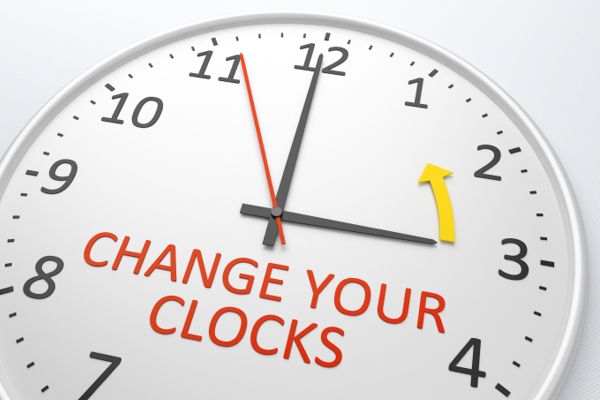End of Daylight Saving Time Can Be Deadly

Early next Sunday morning most of those in the United States will turn their clocks back one hour for the end of Daylight Saving Time. Most of us think: “Fantastic! I get another hour of sleep”; and yes you will. However, there is a huge difference between the “society clock” and the “biological clock” we all work from. During such time changes there is statistically an increase in safety incidents.
With the end of daylight savings time comes an increase of darkness around the time of rush hour, when traffic is at a peak and many are making our way home from work. Drivers aren’t used to the decreased visibility – nor are pedestrians, who might take chances crossing roads when they shouldn’t.
Pedestrians walking around at dusk are nearly three times more likely to be struck and killed by cars in the days following the end of daylight saving time than just before the time change. A study of seven years of nationwide traffic fatalities was conducted at Carnegie Mellon University, calculating the risk per mile walked for pedestrians. The study found that the per-mile risk jumps 186 percent from October to November.
The National Road Safety Foundation (NRSF) has done studies proving that auto accidents increase after the clocks fall back an hour. Besides the lack of visibility, the NRSF notes that commuting in the dark can also make drivers drowsier than usual. According to some health studies, changes in waking time coupled with the earlier onset of darkness throws off our internal clocks. This increases driving risks, primarily because in our 24/7 society, we have a fundamental problem of already being sleep deprived.
The end of daylight saving time can leave many feeling fatigued, which can pose safety risks both at home and in the workplace. Some things to keep in mind when switching back to standard time are:
Fatigue -- Studies suggest that it takes people who work traditional hours several days to fully readjust their sleep schedule after the time change. While it may seem a welcome gift to get an extra hour of sleep as opposed to losing an hour in the spring, there is a physiological consequence to changing our clocks. Don’t be surprised if you feel a bit sluggish during the first week or so of November.
Accidents -- Evidence suggests that time changes increase safety problems both at work and at home. Just being aware of the increased risk of accidents in the period immediately following the time change may help you stay alert. Try to avoid building up a sleep debt in the days before the change.
Safety professionals have long used the start and end of daylight saving time as reminders for performing recurring safety tasks. Use the occasion of setting your clocks back as a cue to:
- Check and replace the batteries in your smoke and carbon monoxide (CO) alarms. Ensure they are working properly and replace the batteries. As the cold sets in and many start up their gas-fired furnaces, fireplaces, portable unit heaters and the like for the first time, carbon monoxide poisoning risks increase dramatically during this time of year. Replace any smoke alarm unit that is older than 10 years. Replace any CO alarm unit that is older than 5 years.
- Prepare a winter emergency kit for your automobile. Such kits can be a lifesaver if you are stuck out in bad weather while driving. They should include items such as: warm clothes, blanket, flashlight, batteries, water, non-perishable snacks, shovel, flares, reflective hazard triangle, jumper cables, cat litter or sand for traction, ski hat and gloves.
- Check to see if your fire extinguishers need recharging. Check the small gauge at the top of the extinguisher. If the needle in that gauge is in the green, chances are, the extinguisher is okay. If it is in the red, you need to have the extinguisher recharged.